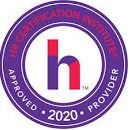Employee Handbooks: Key Issues and Workplace Policies to Consider Amid the COVID-19
Duration : 90 Minutes

This course, has been approved for 1.5 HR (General) recertification credit hours toward aPHR™, PHR®, PHRca®, SPHR®, GPHR®, PHRi™ and SPHRi™ recertification through HR Certification Institute® (HRCI®).
Ronald Adler,
Ronald Adler is the president-CEO of Laurdan Associates, Inc., a veteran-owned, human resource management consulting firm in Rockville, Md., specializing in HR audits, employment practices risk management, benchmarking and HR metrics, strategic HR, employee surveys, and unemployment insurance issu Read more
Employee handbooks have become a valuable tool in providing important information to employees. Handbooks describe the HR policies and procedures, what employers expect of their employees, and what employees can (should) expect from their employers. Handbooks provide critical information about their employers and their workplaces, and describe how employees are expected to fit in.
Additionally, employee handbooks formalize the mutual expectations of organizations and their employees. In delineating these expectations employee handbooks create opportunities and risks for employers. Handbooks provide organizations with the opportunity to enhance the value of their human capital, make their organizations more competitive, and improve individual and organizational performance amid the coronavirus outbreak.
Conversely, handbooks can impede the achievement of business objectives, increase employment related liabilities, and reduce managerial prerogatives by making promises or commitments to certain procedural safeguards that the organization did not intend to make. As noted in the recent memorandum from the General Counsel of the NLRB: incorrectly designed employee handbooks can violate the law and having a “chilling effect” on employees’ activities.
Thus, employee handbooks increasingly provide employers with the opportunity to make their work force more committed to and supportive of organizational goals. At the same time, they also provide the basis for employees’ legal action and can significantly reduce employees’ commitment to the organization’s success.
Why Should You Attend:
The purposes and the scope of employee handbook policies and the practices are changing and expanding. From a siloed HR activity that creates insular documents concerned primarily with communicating the HR policies and procedures, employee handbook process has evolved into a critical component of an organization-wide management process that maximizes organizations’ achievement of business objectives, enhances the value of their human capital, and minimizes legal risks.
Thus, to increase the effectiveness of their employment policies, organizations will have to:
1) Enhance their business, operational, and legal intelligence to ensure they have identified the changing external and internal factors that affect their policies
2) Increase internal stakeholder participation in the handbook development process to obtain greater employee commitment and operational alignment
3) Establish new metrics to assess handbook policy and practices performance and measure the achievement of organizational goals
4) Implement internal controls that identify and alert management when employee handbook process failures occur
Areas Covered:
Thus, employee handbooks will increasingly have to ensure that they are aligned with strategic and business objectives, are properly drafted, and are effectively implemented. Additionally, employee handbooks will have to:
• Enhance the employment brand;
• Play a key role in recruitment and retention;
• Enhance employee relations, employee morale, and productivity;
• Contribute to uniform and consistent application, interpretation, and enforcement of organizational policies and rules;
• Protect the organization against claims of improper employee/supervisor conduct; and
• Reduce the organization’s exposure to employment related liabilities.
From this perspective, employee handbooks will continue to play an important role in communicating with and providing information for employees.
Learning Objectives:
• Key employee handbook issues in 2020
• A review of the NLRB’s memorandum on employee handbooks
• How organizations can reduce the gap between policy issuance and effective implementation
• Review the basics of employee handbook development and how to draft workplace guidance for COVID-19
• Discuss the expanding purposes and scope of employee handbooks
• Learn the dimensions of critical handbook policies
• Understand the framework of employee handbook audits activities
What You Get:
• Training Materials
• Live Q&A Session with our Expert
• Participation Certificate
• Access to Signup Community (Optional)
• Reward Points
Who Will Benefit:
• HR Professionals
• Risk Managers
• Internal Auditors
• In-house Counsel
• CFOs and CEOs
• Management Consultants
• Other individuals who want to learn how to use develop and implement employee handbooks
Please reach us at 1-888-844-8963 for any further assistance or if you wish to register

100% MONEY BACK GUARANTEED
Refund / Cancellation policyGet In Touch
Similar Trainings
Dress Codes, Appearance and the Workplace
LIVE : Scheduled on
22-April-2024 :01:00 PM EDT
|
Presentation Skills for Workplace Success: Confidently, Stand-up, Deliver & Make an Impact
LIVE : Scheduled on
23-April-2024 :01:00 PM EST
|
FMLA Compliance: A Comprehensive Guide & Strategies for Effective Implementation
LIVE : Scheduled on
23-April-2024 :01:00 PM EDT
|
Terminating Employees Safely
LIVE : Scheduled on
24-April-2024 :01:00 PM EDT
|
HR Metrics and Analytics - Update on Strategic Planning, Application Activities, and Operational Impact
LIVE : Scheduled on
25-April-2024 :01:00 PM EDT
|
